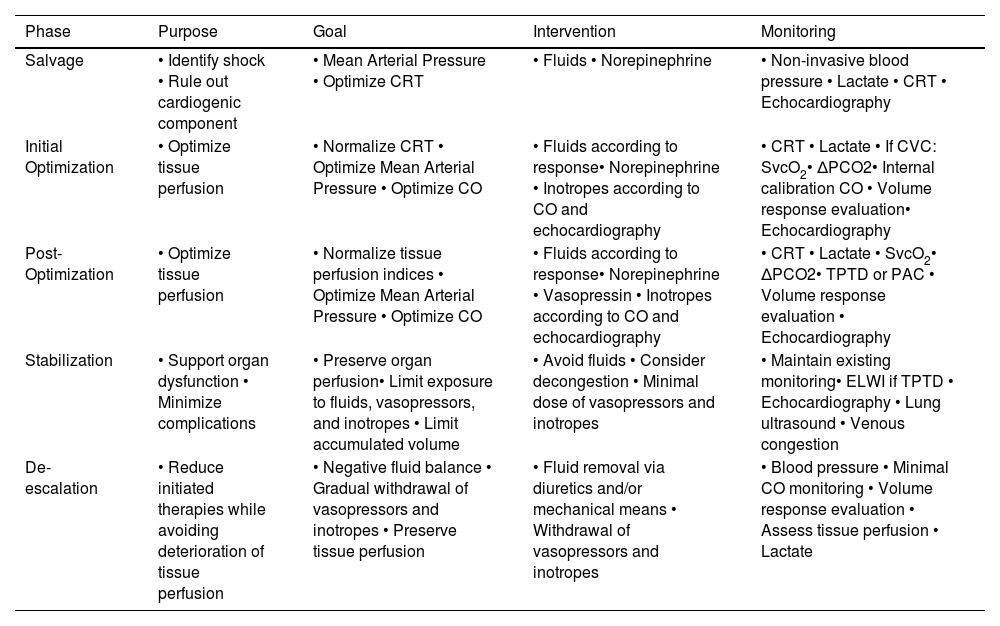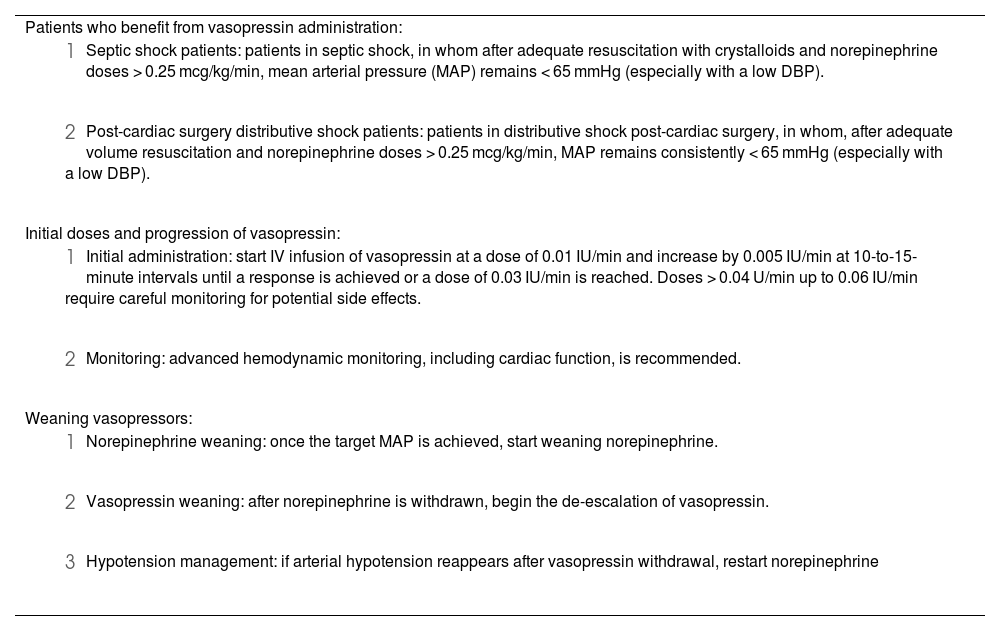The most used vasopressors in critically ill patients are exogenous catecholamines, mainly norepinephrine. Their use can be associated with serious adverse events and even increased mortality, especially if administered at high doses. In recent years, the addition of vasopressin has been proposed to counteract the deleterious effects of high doses of catecholamines (decatecholaminization) with the intention of improving the prognosis of these patients. Currently, vasopressin has two main indications: septic shock and vasoplegic shock in the postoperative period of cardiac surgery. In septic shock, current evidence favors its early initiation before reaching high doses of norepinephrine. In the postoperative period of cardiac surgery, the different benefits of the use of vasopressin have been studied, especially in patients with atrial fibrillation and pulmonary hypertension. When used properly, vasopressin is a safe an effective drug for the indications described above.
Hasta el momento, los vasopresores más utilizados en los pacientes críticos son las catecolaminas exógenas, fundamentalmente la noradrenalina. Sin embargo, estas pueden tener efectos secundarios graves e incluso pueden aumentar la mortalidad, sobre todo si se administran a dosis elevadas. En los últimos años se ha propuesto la adición de la vasopresina para contrarrestar sus efectos deletéreos (decatecolaminización) con la intención de mejorar el pronóstico de estos pacientes. Actualmente, la vasopresina tiene dos indicaciones principales: el shock séptico y el shock vasopléjico en el postoperatorio de cirugía cardiaca. En el shock séptico, la evidencia actual favorece el inicio temprano de vasopresina antes de alcanzar dosis elevadas de noradrenalina. En el postoperatorio de cirugía cardiaca se han estudiado los diferentes beneficios del uso de vasopresina, sobre todo en los pacientes con fibrilación auricular e hipertensión pulmonar. El uso correcto de la vasopresina lo hace un fármaco generalmente seguro y eficaz para estas indicaciones.
Article
Go to the members area of the website of the SEMICYUC (www.semicyuc.org )and click the link to the magazine.









